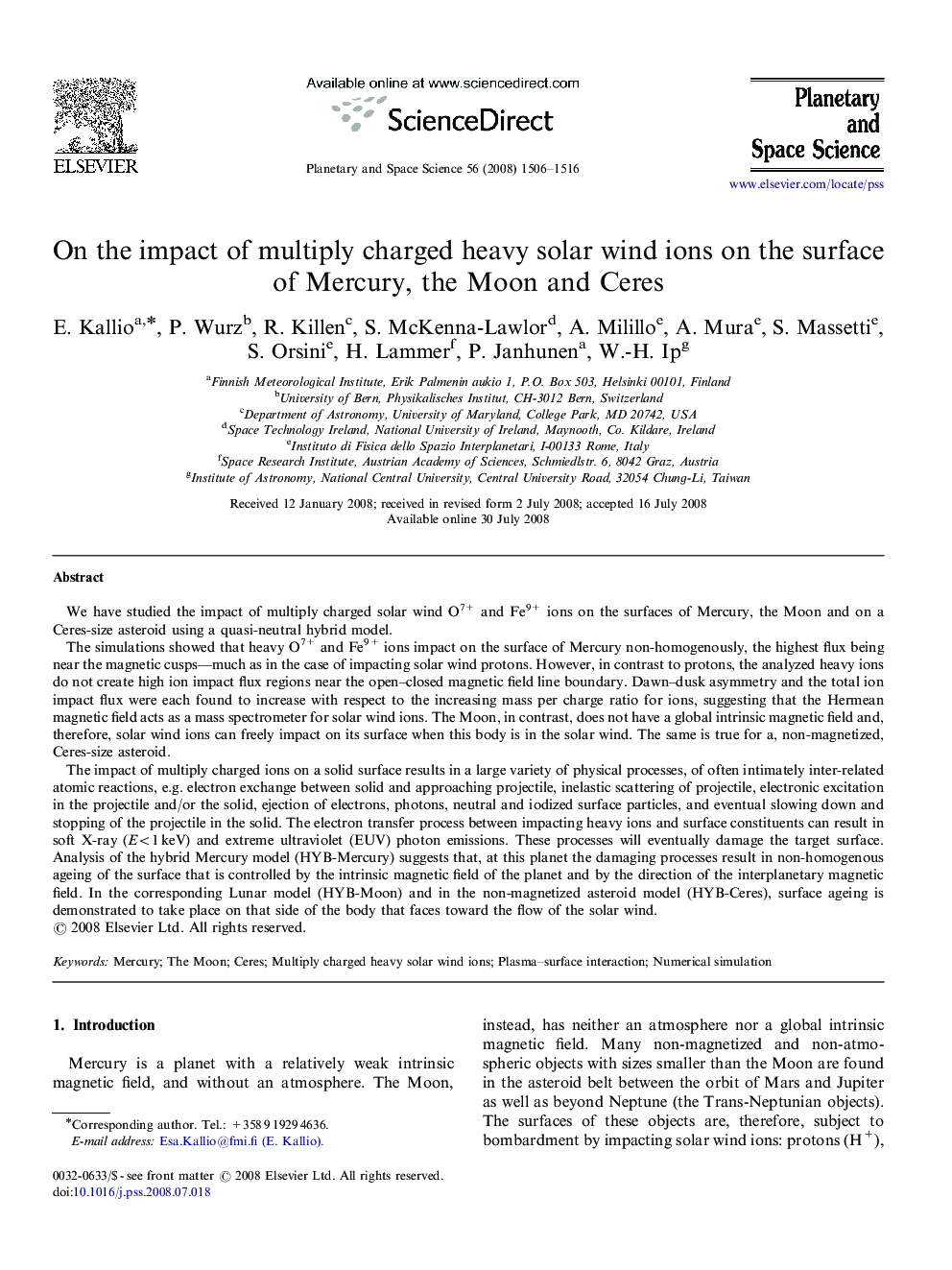| Article ID | Journal | Published Year | Pages | File Type |
|---|---|---|---|---|
| 1782246 | Planetary and Space Science | 2008 | 11 Pages |
We have studied the impact of multiply charged solar wind O7+ and Fe9+ ions on the surfaces of Mercury, the Moon and on a Ceres-size asteroid using a quasi-neutral hybrid model.The simulations showed that heavy O7+ and Fe9+ ions impact on the surface of Mercury non-homogenously, the highest flux being near the magnetic cusps—much as in the case of impacting solar wind protons. However, in contrast to protons, the analyzed heavy ions do not create high ion impact flux regions near the open–closed magnetic field line boundary. Dawn–dusk asymmetry and the total ion impact flux were each found to increase with respect to the increasing mass per charge ratio for ions, suggesting that the Hermean magnetic field acts as a mass spectrometer for solar wind ions. The Moon, in contrast, does not have a global intrinsic magnetic field and, therefore, solar wind ions can freely impact on its surface when this body is in the solar wind. The same is true for a, non-magnetized, Ceres-size asteroid.The impact of multiply charged ions on a solid surface results in a large variety of physical processes, of often intimately inter-related atomic reactions, e.g. electron exchange between solid and approaching projectile, inelastic scattering of projectile, electronic excitation in the projectile and/or the solid, ejection of electrons, photons, neutral and iodized surface particles, and eventual slowing down and stopping of the projectile in the solid. The electron transfer process between impacting heavy ions and surface constituents can result in soft X-ray (E<1 keV) and extreme ultraviolet (EUV) photon emissions. These processes will eventually damage the target surface. Analysis of the hybrid Mercury model (HYB-Mercury) suggests that, at this planet the damaging processes result in non-homogenous ageing of the surface that is controlled by the intrinsic magnetic field of the planet and by the direction of the interplanetary magnetic field. In the corresponding Lunar model (HYB-Moon) and in the non-magnetized asteroid model (HYB-Ceres), surface ageing is demonstrated to take place on that side of the body that faces toward the flow of the solar wind.
